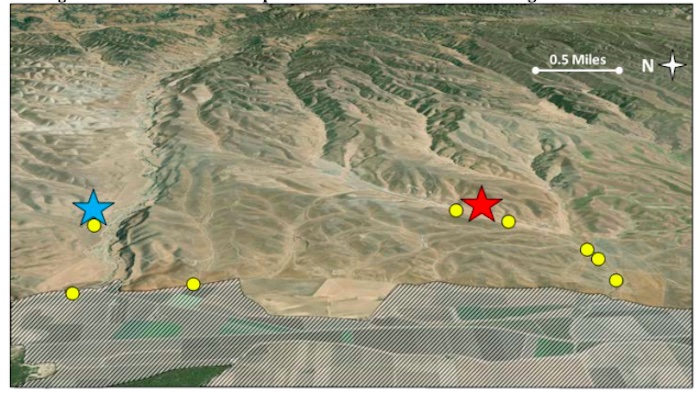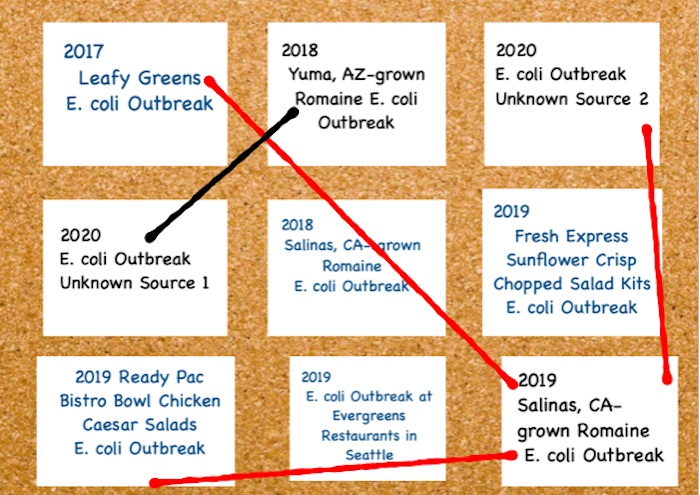Each fall for the last four years an E. coli outbreak has been linked to romaine lettuce or leafy greens produced in California’s Central Coast growing region. The fourth anniversary is supposed to be commemorated with fruit or flowers, but the U.S. Food and Drug Administration (FDA) went with a dense, after-action report containing its findings and recommendations. The same thing it went with last year. And the year before.
To summarize all of the reports: Cattle are the primary reservoir of E. coli O157:H7, a strain of E. coli that causes severe illness and death in humans because of a toxin it produces. The romaine/leafy greens farms associated with these outbreaks are adjacent to cattle grazing areas. The particular isolates of E. coli O157:H7 associated with these annual outbreaks have turned up in samples of cow poop found uphill from the fields and in a sediment sample taken from an on-farm water reservoir. Because the outbreaks occur near the end of the growing season, there are never any greens growing in the fields to test. The FDA thinks cattle from nearby ranches are the likely source of contamination and recommends certain measures be implemented regarding the use of agricultural water, root-cause analysis, accurate origin labeling, modernization of record-keeping, and mitigation of risks associated with adjacent and nearby land use.
But this year -after four years, hundreds of illnesses and at least one fatality, something new was added. The characterization of the proximity of cattle grazing uphill from fields where food meant to be eaten raw is grown as a “reasonably foreseeable hazard” in the area. In the report, the agency states, “We note that farms covered by the [Food Safety and Modernization Act] FSMA Produce Safety Rule are required to implement science- and risk-based preventive measures of that rule.”
The image below shows leafy greens growing areas in the shaded part at the bottom of the picture and cattle grazing areas uphill from them.

Back in January 2021, when the FDA announced that it had found the outbreak strain in cattle poop uphill from the farms where the implicated greens were grown, the California Leafy Greens Marketing Agreement (LGMA) issued a response saying it had already taken action to address the situation. Its “Adjacent Lands Subcommittee has active participation from growers, food safety experts, scientists, landowners and cattle ranchers to examine all possible ways to better assess and mitigate risks that may be present not just on leafy greens farms, but on property located near leafy greens farms.”
“There have been similar calls and responses before”, said Food Safety Attorney Fred Pritzker, whose law firm has represented many of the people sickened by contaminated salad greens. “Each year is the same. There is an outbreak, the FDA investigates, and then makes recommendations that growers take action to prevent contamination from cow manure on adjacent ranches and improve their record-keeping so investigators can more easily trace back the source of contamination. And a few months later there is another outbreak.”
The outbreak referenced in the FDA’s report this year was one of three multistate E. coli outbreaks where leafy greens were a suspected source. The illustration below shows outbreaks that shared a common strain and/or a common grower.
Leafy greens are now positioned to overtake ground beef as the most common source of E. coli outbreaks. Between 2009 and 2018, 40 E. coli outbreaks were linked to leafy greens.
